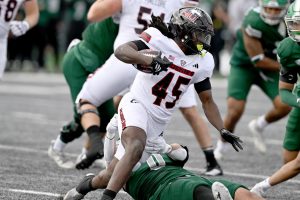Confusion over what data schools can provide for 2020 Census
February 2, 2020
ORLANDO, Fla. (AP) — The U.S. Census Bureau this week starts its process of counting students living in college-run housing, but there’s confusion over what demographic information university officials can share with the agency.
Two weeks ago, the U.S. Department of Education said in a memo to schools that they couldn’t, if asked, provide information about students’ sex, race and Hispanic origin for the 2020 Census. Now the department says schools are able to furnish such data if they strip away anything that could identify a student.
The department’s new position was issued last week in a revision of a memo it sent out last month to universities about how students living in college housing should be counted.
The 2020 Census form “asks for information about the student’s sex, Hispanic, Latino, or Spanish origin, and race,” said the original memo issued on Jan. 14. “However, school officials may not disclose this information, without prior written consent from the student.”
The revised memo says schools can furnish the demographic information provided “such data is de-identified.”
The memo’s author, Kala Suprenant, acting director of the Student Privacy Policy Office, and the agency’s press office, didn’t immediately respond Sunday to emails inquiring about the reason for the change. The revised memo noted that the office had received questions from universities about the earlier memo.
Much is at stake: the 2020 count will help determine the allocation of $1.5 trillion in federal spending and how many congressional seats each state gets.
The last Census in 2010 found more than 2.5 million students living in dorms or on-campus fraternity of sorority houses, the largest segment of what the Census Bureau refers to as “group quarters,” which also include prisons, jails and nursing homes.
And because of the difficulty in counting students, the Census Bureau will start reaching out to college campuses this week to collect information about student housing. The 2020 count started last month in rural Alaska, and the rest of the nation won’t begin participating until mid-March.
At risk is getting a complete count of the students living in college-run housing. Under the old version of the memo, a decades-old privacy law would have prohibited schools from providing the Census Bureau with information on students’ sex, race and Hispanic origin, if the students didn’t fill out the forms asking about those demographic details.
The Family Educational Rights and Privacy Act says students need to provide written consent before information from their records can be shared, but an exception is made for what is called “directory information.” Directory information includes facts often found in student handbooks or yearbooks, such as names, addresses, telephone numbers, dates of birth, activities and dates of attendance. Directory information doesn’t include sex, race or Hispanic origin, and the school can’t provide any information about students who have opted out of sharing directory information.
The Census Bureau is giving campuses three ways to fill out the forms. A census taker can drop off paper forms to a university liaison to distribute to students, and then the students return them in sealed envelopes so the liaison can hand them back to the census taker. A census taker can knock on doors in the dorm or house and personally interview residents, the most costly method. Or, a university representative can fill out the form for everyone living there using administrative records — t he most efficient method.
In 2010, more than a third of students in college housing were counted through administrative records provided by the university.
“The data that comes from administrative records is never as accurate as information collected directly from individuals and households,” said Terri Ann Lowenthal, a consultant and former top congressional aide specializing in the census.
Students who live off-campus can fill out the forms as those in other households would.
In a statement, the Census Bureau said it expected to get most of its information about on-campus students from the “drop off/ pick up” method.
Counting college students in group housing is tricky. Students sometimes leave campus as the school semester winds down during the count and students often don’t know if they should answer the form or let their parents do it back home. The Census Bureau says students should be counted where they live, which in most cases is where the students go to school.
This is the first year the Census Bureau is encouraging a majority of respondents to answer the once-a-decade questionnaire online, although they still can answer by telephone or by mailing in a paper form.
But students living in college housing, perhaps the group most likely to answer questions online, will be given paper forms. Cutbacks in research and testing for group quarters led to that decision, Lowenthal said.
———
This story has been corrected to show the 2020 count started last month in rural Alaska, not last week.
———
Follow Mike Schneider on Twitter at https://twitter.com/MikeSchneiderAP






